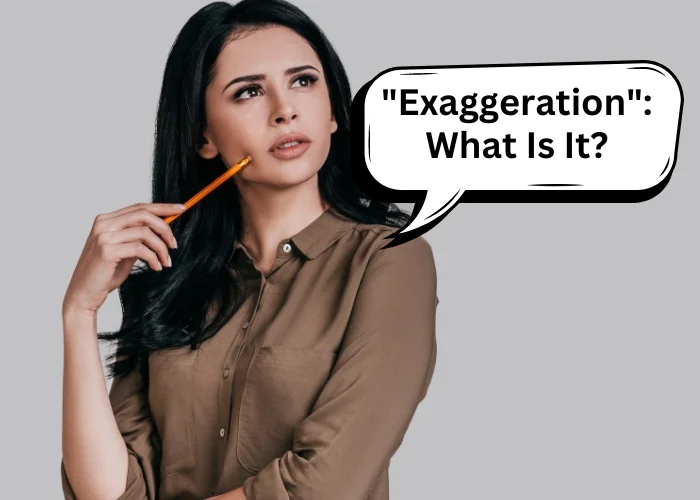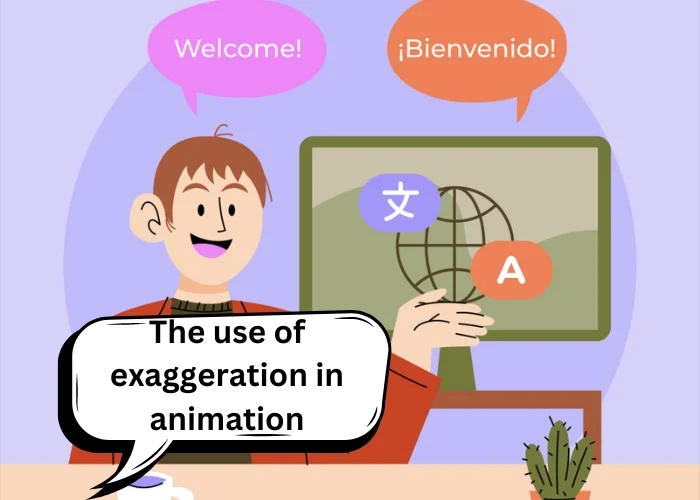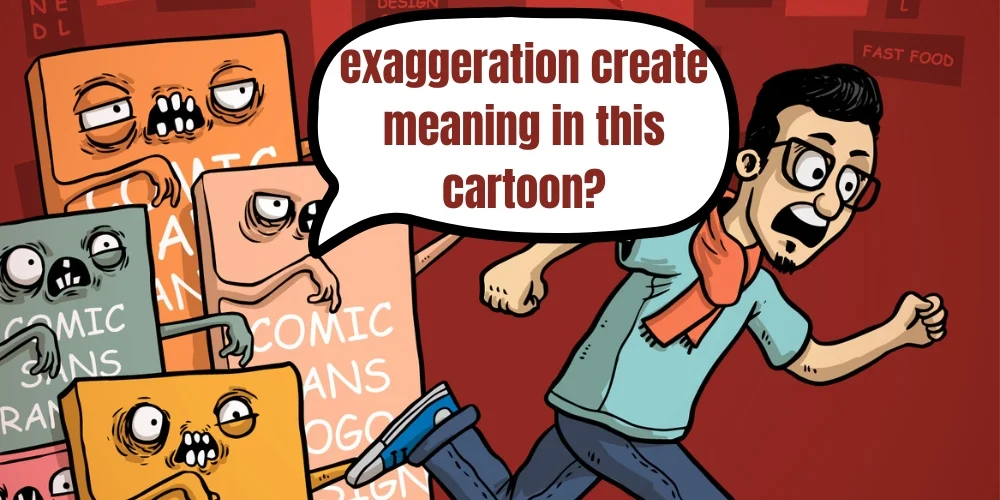This cartoon’s exaggeration highlights particular concepts or elements, giving it meaning. Here, the exaggeration emphasises how the oil spill has affected the ecology negatively. The little fish and flamingo demonstrate how little wildlife there is in contrast to the oil spill. The amount of oil on the animals exaggerates the impact of the disaster on wildlife. The stark contrast between the dark oil and the brilliant water highlights the damaging effects of human activities on the ecosystem. Lastly, the massive footprint overstates the scope of the oil spill’s effects. Let’s talk about how exaggeration creates meaning in this cartoon.
Walt instructed Disney animators to add more realism to their early works, frequently leaving them perplexed. When they used a realistic approach, Walt criticized the final product for not being exaggerated enough. Walt believed that his intended message was mostly unchanged from the original. What, therefore, is the appropriate response to the given scenario? In the piece below, DeeDee Animation company will help us find out!
“Exaggeration”: What Is It?

“Exaggeration” is defined by the Oxford Dictionary as the process of making anything appear more prominent, better, worse, or more significant than it is. This connotation is similar to the word’s definition when used in animation. Consider the scenario Walt laid out for his animators as illustrative of this; his notion of making things appear “more real” involves enhancing the attraction and vividness of the concept and action rather than incorporating necessary reality into those characters, actions, and events.
Why make such a big deal out of it?
You can make stories that are funnier and more captivating by using exaggeration to create more likeable and memorable characters. You can draw attention to a character’s characteristics, feelings, or goals and set them apart from other characters or the setting by bringing particular aspects of their appearance or performance to life. Using more extreme stances, expressions, or gestures, exaggeration can also help you communicate the intensity, speed, or impact of an action or a character’s response to a circumstance.
The use of exaggeration in animation

Animation of character expressions illustrates how exaggeration is applied. Make the character appear more melancholy if they are depressed & make the character appear happier if they are having a good time. The character’s worry makes them more uneasy. It would help if you were more subtle and intense with other expressions. The exaggeration makes the action appear more convincing rather than less.
Take a look at how cartoons use exaggeration to convey the message:
Emphasising Important Details
Physical attributes:
Characters often use exaggeration to draw attention to their physical attributes, highlighting their nature or function. For example, a cartoon character could represent a politician with an enormous mouth to highlight their tendency to talk a lot but say nothing of value. The cartoonist’s message is more accessible for viewers to understand because of this visual shorthand.
Expressions of Feelings:
Cartoons frequently exaggerate body language and facial expressions to highlight emotions. A figure depicted with a large, tear-streaked face and a hunched-over stance amply communicates extreme sorrow or defeat. With a look, the audience grasps the emotional state of the character due to the exaggeration.
Making Difficult Concepts Simple
Metaphors in Visuals:
Exaggeration can make difficult-to-understand abstract ideas seem more tangible. For instance, a cartoon about the economy might show a small, flimsy boat called the “Middle Class” being swamped by a vast, menacing wave called the “Recession.” This heightened contrast simplifies the complex interplay between economic forces and their impact on ordinary people.
Significative Illustration:
Cartoons develop symbols that represent more significant ideas by exaggerating them. For instance, a business person’s top hat and monocle can be exaggerated to symbolise corporate greed and riches, sending a strong message about economic inequality.
Making a Joke
ludicrousness
Exaggeration frequently creates ludicrous situations that have the potential to be humorous. Envision a character sprinting at such a high speed that their legs blur or elongate like rubber bands. In addition to being hilarious, this exaggeration highlights the character’s desperation.
Parody:
Cartoons exaggerate their looks or behaviours, producing hilarious and critical caricatures of well-known persons. A cartoon might make light of a celebrity’s image by showing them with an oversized ego, symbolised by a hilariously swollen head.
Improving Criticism and Satire
Laughter and blathering:
A person can use exaggeration as a weapon to mock, enhancing the satirical tone of their cartoon character. A cartoonist may make fun of a politician’s perceived weakness by exaggerating their incompetence by showing them straining to complete a straightforward activity.
Bringing Attention to Errors:
Cartoons can offer incisive criticism by emphasising the shortcomings or errors of people or institutions. An example of a cartoon that highlights environmental carelessness dramatically and memorably would be one in which a corporation is shown polluting a river with a fictional poisonous sludge.
Eliciting feelings of emotion
Identification and Empathy:
Exaggeration can increase the relatability of people and situations by emphasising feelings or difficulties the viewer may encounter. A cartoon of a worker with a sagging posture and an overly fatigued expression can make people feel better about themselves if they feel overworked and undervalued.
Surprise and Wonder:
The audience is occasionally startled and called attention to important topics through the use of exaggeration. A damaged Earth can be depicted in a climate change cartoon to highlight the urgency of environmental action.
Today’s animation industry makes extensive use of exaggeration.

The Walt Disney production company described exaggeration as staying true to reality and presenting it in a wilder, more extreme form.Changincharacter’s physical attributes are another way to exaggerate, particularly when constructing a supernatural encounter. Experts advise striking a balance between the many elements of a picture to prevent confusion for viewers. For this reason, when animators alter characters’ appearance in a spooky movie, they always preserve characters’ distinctive qualities so that viewers can quickly identify and get the most out of them.
Conclusion:
Many viewers would find it difficult to accept the animation as a legitimate animated film if it did not contain any exaggeration. One of the most valuable and practical tools of a cartoonist is exaggeration.
Cartoonists use humour, sarcasm, and empathy to engage their audience while swiftly and efficiently communicating complicated ideas by emphasising particular components. Exaggeration makes cartoons more memorable and impactful by bringing their contents to life on a deeper level, whether it is through emphasising important details, breaking down complex concepts into simpler terms, generating humour, intensifying critique, or evoking strong emotions.

